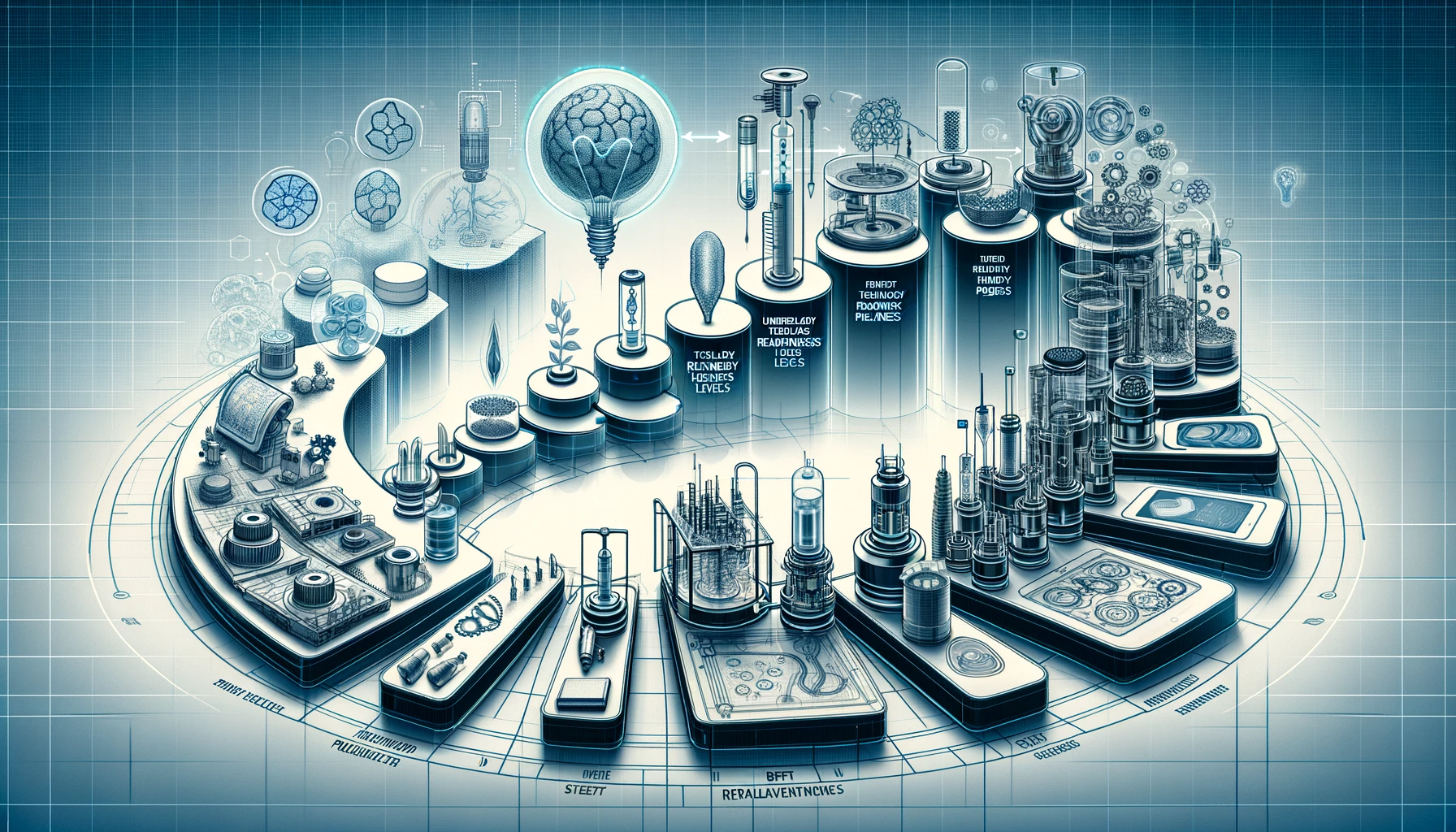Traversing TRLs in MedTech Development: A Step-by-Step Journey
The journey of MedTech hardware products from conception to market availability is meticulously charted through Technology Readiness Levels (TRLs). Each level signifies a critical stage in the development of medical devices, ensuring safety, efficacy, and market readiness. Here is a detailed exploration of each TRL in the context of MedTech hardware products.
- TRL1 – Define Basic Properties: The journey begins with defining the basic properties and capabilities of the proposed medical device. This stage involves conceptualizing what the device will do and its underlying technology.
- TRL2 – Analytical Study: Researchers conduct analytical studies to understand how the conceptualized device will work. This includes theoretical analysis and design studies.
- TRL3 – Proof of Concept: At this stage, a proof of concept is developed. This involves creating initial models or simulations to demonstrate the feasibility of the device.
- TRL4 – Pre-Prototype: Development progresses to creating a pre-prototype of the device, which is an early version designed to test the basic concept in a non-clinical setting.
- TRL5 – Pre-Prototype Tested in Lab: The pre-prototype undergoes rigorous testing in a laboratory setting. This testing aims to evaluate the device’s functionality and gather data for further development.
- TRL6 – Prototype Tested in Relevant Environment: A more refined prototype is developed and tested in an environment that closely replicates real-world conditions where the device will be used.
- TRL7 – Approved Prototype: The prototype reaches a stage where it is approved for final development. This typically involves passing certain regulatory checks and validations.
- TRL8 – Pre-Serial Manufacturing: The device moves into pre-serial manufacturing, where small batches are produced to ensure manufacturing processes are ready for full-scale production.
- TRL9 – Product on Market: The final stage, where the MedTech hardware product is fully developed, manufactured, and available on the market. It has passed all regulatory approvals and is ready for use in healthcare settings.
MedTech TRLs
The progression from TRL1 to TRL9 in MedTech hardware product development is a methodical and critical process, ensuring that medical devices meet the highest standards of quality and safety.
About
The articles found on Rasph.com reflect the opinions of Rasph or its respective authors and in no way reflect opinions held by the European Commission (EC) or the European Innovation Council (EIC). The provided information aims to share perspectives that are valuable and can potentially inform applicants regarding grant funding schemes such as the EIC Accelerator, EIC Pathfinder, EIC Transition or related programs such as Innovate UK in the United Kingdom or the Small Business Innovation and Research grant (SBIR) in the United States.
The articles can also be a useful resource for other consultancies in the grant space as well as professional grant writers who are hired as freelancers or are part of a Small and Medium-sized Enterprise (SME). The EIC Accelerator is part of Horizon Europe (2021-2027) which has recently replaced the previous framework program Horizon 2020.
This article was written by ChatEIC. ChatEIC is an EIC Accelerator assistant that can advise on the writing of proposals, discuss current trends and create insightful articles on a variety of topics. The articles written by ChatEIC can contain inaccurate or outdated information.
- Contact Us -
EIC Accelerator Articles
All Eligible EIC Accelerator Countries (including the United Kingdom, Switzerland and Ukraine)
Explaining the Resubmission Process for the EIC Accelerator
A Short but Comprehensive Explanation of the EIC Accelerator
The EIC’s One-Stop Shop Funding Framework (Pathfinder, Transition, Accelerator)
Deciding Between EIC Pathfinder, Transition and Accelerator
A Winning Candidate for the EIC Accelerator
The Challenge with EIC Accelerator Open Calls: MedTech Innovations Dominate
Go Fund Yourself: Are EIC Accelerator Equity Investments Necessary? (Presenting Grant+)
Digging Deep: The New DeepTech Focus of the EIC Accelerator and its Funding Bottlenecks
Zombie Innovation: EIC Accelerator Funding for the Living Dead
Smack My Pitch Up: Changing The Evaluation Focus Of The EIC Accelerator
How Deep Is Your Tech? The European Innovation Council Impact Report (EIC Accelerator)
Analyzing A Leaked EIC Accelerator Interview List (Success Rates, Industries, Direct Submissions)
Steering the EIC Accelerator: Lessons Learned from the Pilot Program
Who Should Not Apply To The EIC Accelerator And Why
The Risk of Presenting all Risks in the High-Risk EIC Accelerator Program
How to Prepare an EIC Accelerator Resubmission
How to Prepare a Good EIC Accelerator Application: General Project Advice
How to Craft an EIC Accelerator Rebuttal: Explaining Grant Proposal Resubmissions

